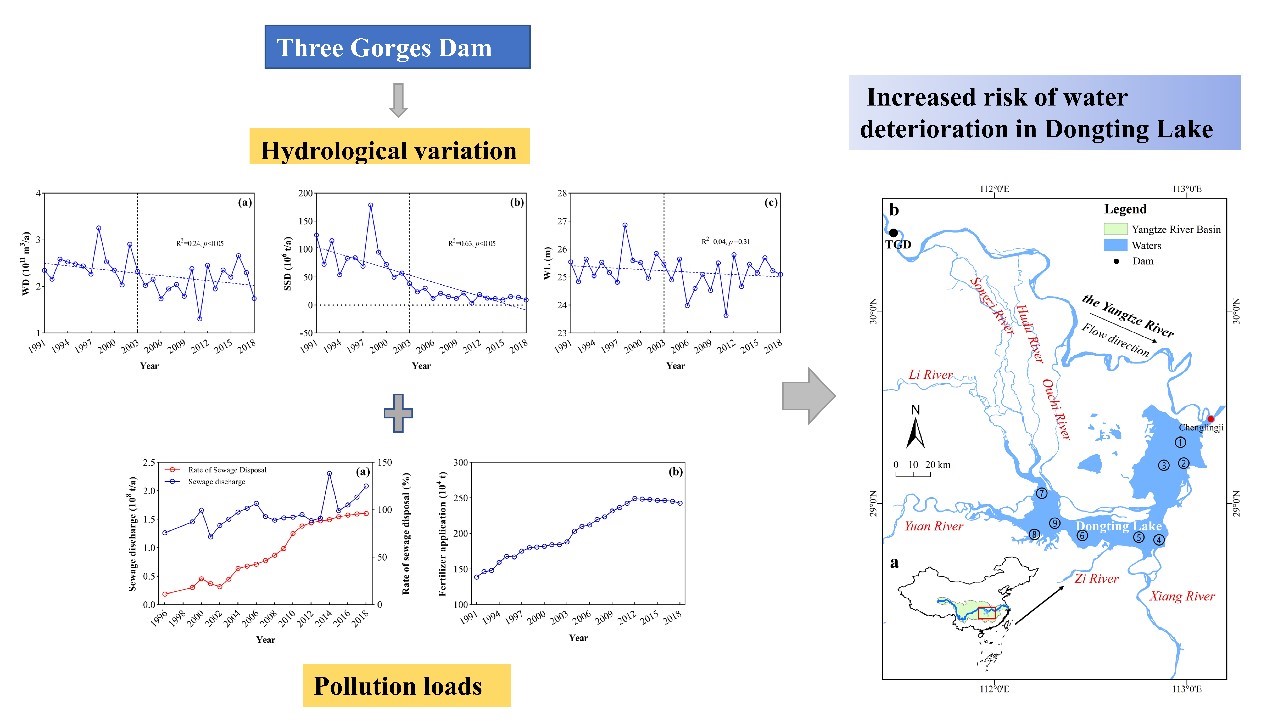Lakes play an important role in regulating ecological balance at global and regional scales. Globally, there are over 1,400 inland water bodies (lakes and reservoirs) with a surface area greater than or equal to 100 km2.
Water quality is one fundamental aspect of the ecological functions that lakes play. However, due to the rapid growth of industrialization and population, large amounts of sewage are discharged into lakes, leading to the deterioration of water quality and serious ecological problems.
Researchers from the Institute of Subtropical Agriculture (ISA) of the Chinese Academy of Sciences studied the spatiotemporal water quality variations and their relationship with hydrological conditions in Dongting Lake after the operation of the Three Gorges Dam (TGD), China.
The total nitrogen (TN) and total phosphorus (TP) concentrations showed general increasing trends in the pre-TGD period. A significant increasing TN trend and a decreasing TP trend appeared in the post-TGD period, the latter of which was closely linked to a prominent decrease of water and suspended sediment discharge after the initiation of TGD operation.
TN concentrations showed significant spatial variations during the study period, with the highest concentration in East Dongting Lake and the lowest concentration in West Dongting Lake.
The contribution of the "four tributaries" (Xiang, Zi, Yuan, and Li rivers) to lake water quality was much greater than that of the "three channels" (Songzi, Hudu, and Ouchi rivers), accounting for 89.94-92.25% of N inputs and 74.10-75.85% of P inputs. Moreover, the contribution of the "three channels" to lake water quality decreased after TGD operation, mainly because of the reduced nutrient input, water discharge, and suspended sediment discharge.
Nutrient inputs were the dominant pollution source determining the water quality of Dongting Lake; water discharge and water level were also important factors controlling the spatiotemporal variability of water quality.
This study indicates that controlling pollutant effluents in tributaries and monitoring hydrological conditions within the lake are the key factors necessary to improve the water quality in Dongting Lake and may provide a practical reference for water quality management in river-connected lakes worldwide.
The study was published in Journal of Cleaner Production. It was supported by the Joint Fund for Regional Innovation and Development of NSFC, the Youth Innovation Promotion Association of CAS, the Water Conservancy Science Project of Hunan Province, the Changsha Science and Technology Project.
Contact: Li Feng
E-mail: lifeng@isa.ac.cn

Figure. 1. Hydrological conditions and nutrient input mutually affect water quality in Dongting Lake (image by GENG Mingming)